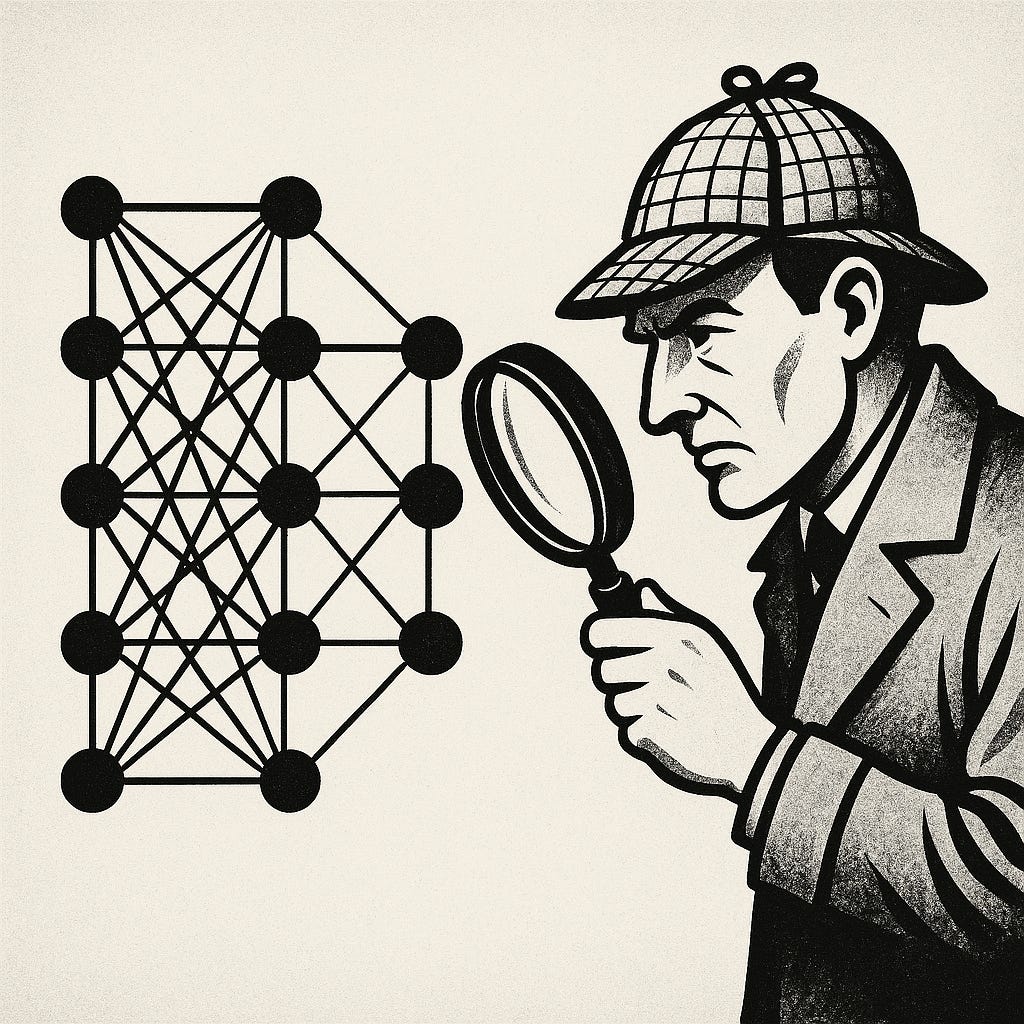Remembering Without a Trace of a Trace: Of Mice, Humans, and LLMs
Daniel D. Hutto (University of Wollongong)
They say the oldies are the goodies — and the idea that memory traces underpin remembering is about as old as it gets in philosophy. The notion that our capacity to remember must involve some kind of trace — one that links the content of what we now recall to what we originally experienced — has a long pedigree. We find this idea as far back as the writings of Plato and Aristotle, both of whom helped shape the enduring conviction that memory traces are a must through their early musings on what makes remembering possible.
The idea has run and run, down the ages. And its hold on our philosophical imagination shows no sign of abating.
For purposes of this blog discussion, let’s focus on the kinds of remembering, episodic and autobiographical, for which the need to posit memory traces is most plausible — and, indeed, seemingly compelling.
Surely when I remember details of what happened at my wedding, over three decades ago, it’s because something was laid down in my mind, some detailed content was preserved. Surely that important moment in my life — that specific episode — left a particular mark in me, in my memory? But is stored information or stored content really what enables us to remember?
Radical Enactivism says no. It rejects contentful memory traces altogether, offering instead a non-representational, action-based alternative. According to Radical Enactivism, the very idea of informational memory traces dissolves under conceptual scrutiny. They are not empirically confirmed facts, but artifacts of theory-laden philosophical convictions.
Traditional trace theorists assume remembering depends on discrete, content-bearing engrams that are reactivated in recall. More daring accounts hold that stored remembered content is distributed and holistic, in line with connectionist models. But both assume that remembering involves storing and retrieving content.
Radical Enactivism breaks with this entirely. Radical Enactivism holds that remembering is a matter of being dynamically responsive to past events, shaped by prior experience, without needing to retrieve stored content. It draws on findings from neuroscience, development, and cross-cultural studies to rethink what remembering is.
Episodic remembering is usually portrayed as requiring the recovery of contentful representations. Radical Enactivism, in contrast, treats episodic recall instead as phenomenally charged but contentless imaginative reenactment. To remember is to re-engage affectively charged sensorimotor patterns that loosely reconstitute what-it-was-like. These re-enacted experiences are not built from stored contents but are the result of reinstating patterns of prior embodied history.
Only in autobiographical remembering does Radical Enactivism acknowledge a central role for content-involving activity. But the content in question isn’t something stored and recovered. It emerges through our participation in socio-cultural narrative practices. According to the Narrative Practice Hypothesis for Autobiographical Memory (NPH-AM), this special kind of remembering is a matter of our making claims about the past in contextually situated, norm-governed discourse. We remember contentful details about specific episodes of our past only after we master the art of telling stories about such happenings — through very particular kinds of narrative practices.
More fundamentally, the whole idea that stored content could explain remembering runs afoul of two deeper problems. First, there’s the Hard Problem of Content: it remains unexplained how content arises in nature prior to enculturation and mastery of discursive practices. Second, there’s the Information Processing Challenge: even if we grant that cognition is informationally sensitive, being relational, information is not a commodity. It is not an abstract or concrete thing. I cannot, in fact, be extracted, stored, or retrieved – despite the popular use of these metaphors.
So far, so philosophical. But what does the science say?
There are many findings, most notably the recent optogenetic studies on mice, that strongly suggest that we have compelling evidence of memory traces with stored and manipulable contents. By tagging and reactivating specific neurons, researchers have induced distinctive responses, leading many to claim that memories can be stored, reactivated, even edited.
Yet these studies prove less than is often claimed. They show that manipulating neural structures changes behavior. But they don’t show that even mice have stored, contentful, reactivated memories. This interpretation adopts a cognitivist lens when reading the data.
Radical Enactivism goes a different way. The findings are impressive and constitute a technical breakthrough, but they do not necessitate belief in contentful traces. Neural patterns can enable behavior without being memories themselves or implying the existence of stored information or contents. In other words, for all we know, it remains possible that we and mice can remember without having any memory traces with stored contents.
Forget humans and mice. What of LLMs?
Today’s large language models — like GPT — appear to remember all sorts of things. They can answer questions, maintain conversations in context-sensitive ways, and even repeat prior utterances verbatim. But they do this without storing or retrieving contentful traces.
An LLM can recall all sorts of things – about Napoleon and Waterloo, for example – but it doesn’t do so by storing any informational or contentful details about Napoleon or that famous battle. Rather, it generates its responses based on the way its tendencies of response are changed by statistical patterns in its training data. Its form of ‘remembering’ is a matter of generative pattern completion that is not based on the recovery of stored information.
Still, it gets the job done. Prima facie, LLMs provide us with a kind of existence proof. If an LLM can remember — at least in some sense — without requiring memory traces, then memory traces are not metaphysically necessary for remembering simpliciter. Now a natural reply at this juncture might be to claim that LLMs don’t really remember. Despite all their antics, they only seem to remember. Or one might try to argue that they are only capable of a kind of limited capacity to remember semantic details and present them in a way that observes conversational implicatures. Still, since they lack a lived and embodied phenomenology. Indeed, one might go further and claim that, for this very reason, LLMs cannot engage in distinctively human kinds of episodic and autobiographical remembering.
To be clear: an LLM can remember — in a limited, functional sense. It can track and respond to patterns across time, and it can make context-sensitive use of earlier exchanges within a short-lived window. But this is unlike typical forms of human episodic remembering: there is no emotionally charged, personal evaluation of past episodes, no phenomenologically rich experience of re-living previous interactions, no grasp of events as events in its personal past. So, while it has a past, it cannot inhabit or recall that past as such.
All of this is true, and it is quite important to keep in mind in some contexts. But that reply would miss the important point. For if LLMs can remember in any sense, in performative and functionally adequate but limited ways, without contentful storage, then the general claim that memory traces with stored content are necessary for remembering is undercut.
LLMs provide an existence proof that shows that, at least when that claim is advanced in its widest scope, we can see it ain’t necessarily so. So, going back to our ancient drawing board and our perennial musings about memory, the conviction that there must be an explanatory link between remembering and memory traces is not a metaphysical necessity, but a philosophical assumption that remains open to serious challenge.




